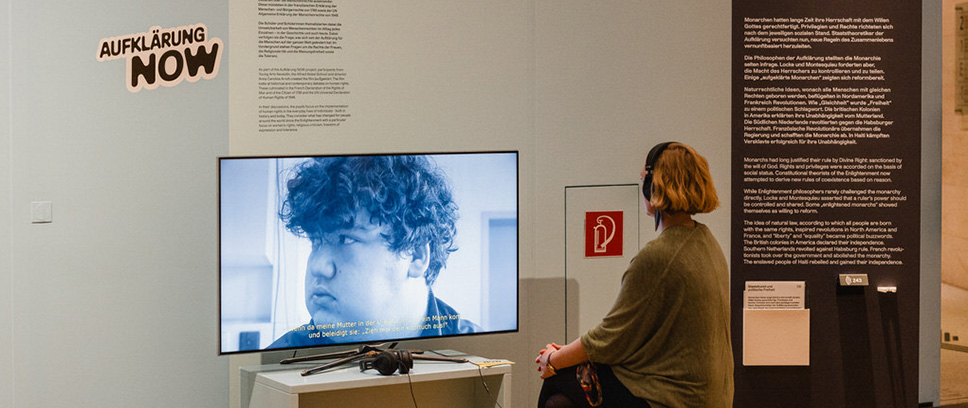
Enlightenment NOW – Opportunities and Challenges of an Outreach Project
Brigitte Vogel and Dr. Crawford Matthews | 1 October 2025
Thanks to funding from the German Federal Cultural Foundation, the Enlightenment NOW project was able to implement innovative and participatory outreach approaches in cooperation with the exhibition “What is Enlightenment? Questions for the 18th Century”. Brigitte Vogel and Dr. Crawford Matthews talk about the course of the project and the DHM’s learning process.
“Outreach” is an English term that implies reaching out to other people. In a museum context, this means actively approaching groups that are underrepresented in museums and getting them involved by having them participate in the work and aims of the museum. As an approach, outreach has received increasing attention in recent years, and many cultural institutions have hired outreach staff members. However, the term refers to many different approaches – as well as expectations. In research and practice, experts have found that “outreach without participation is not outreach”. [1] The Deutsches Historisches Museum pursued a similar approach and focused on participation and visibility in its Enlightenment NOW project.
The aim was to build bridges between the themes of the Enlightenment era and the issues that concern young people today. The topics and concept of the exhibition were largely decided by the time the project got underway. A non-representative survey of young people revealed that very few showed any great interest in “Questions for the 18th Century”. Why deal with questions from that period when those of the present await answers much more urgently?
These questions and issues of the present day, including human rights, racism, religious tolerance, access to educational institutions, and women’s equality, became the starting point for exploring topics from the 18th century. Discussions about historical connections, comparisons and differences were at the heart of the collaboration with the respective groups. From the outset, the aim was to highlight the creative projects in the exhibition, which at the same time would yield additional information for all visitors. Close collaboration with the exhibition team (curator, project management, designers, workshops, communications department, etc.) was important at every stage.
The outreach project team sought cooperation partners from the Berlin city community in order to develop projects over several months that could be presented in the exhibition. The search for project partners who were willing to work voluntarily and continuously on a project over several months proved more difficult than expected, as many institutions, such as youth centres, do not have sufficient staff and the principle of such centres, where young people come voluntarily and at irregular intervals, contradicts the ongoing cooperation with a project partner that was needed in our case.
By mid-January, four different cooperation partners had been identified: young arts Neukölln, who had “Film” as an elective subject at the Alfred Nobel School; the Lohana Berkins Education Centre; the youth committee of the Schattenmuseum together with the artist collective “sideviews”; and a training class at the University of Applied Sciences for Social Pedagogy in the Pestalozzi-Fröbel-Haus. Each of these partners contributed different perspectives and areas of expertise and approached the exhibition topics in various ways, often based on their personal biographies. A major motivating factor for all of the partners was the prospect of displaying their project results in the exhibition.
Workshops on the exhibition themes of human rights, public discourse, gender history and pedagogy, as well as global citizenship and mercantilism, were held with the cooperation partners, followed by discussions about their relevance to the present day. The focus was on generating interest among the participants by highlighting the topicality of the exhibition themes. Each of the groups chose the topic they wanted to continue working on in the project. Exhibition areas, interventions and educational stations were designed to emphasise the current relevance of the exhibition topics and highlight the perspectives of the project participants.



Photos: Participants from the cooperation partners Lohana Berkins Education Centre, University of Applied Sciences for Social Pedagogy in the Pestalozzi-Fröbel-Haus, and youth committee of the Schattenmuseum dealing with the exhibition themes during the workshops
Working closely with the outreach project team, the cooperation partners developed four creative works, discussed them with the exhibition team, and realised them in collaboration with the designer, the graphic design agency, the media technician, and the DHM workshops. The works were integrated into the thematic exhibition areas and presented in context with the corresponding objects. The Schattenmuseum youth committee, together with the “sideviews” artist collective, designed the area “9m² Knowledge from Society”, based on the question “How can the fly eat the elephant?”. This area dealt with the Enlightenment themes of public discourse and the project of the Encyclopaedists. A “knowledge repository” was created that invited all visitors to participate in discussions of social importance and to dispute with contrary opinions. The prospective social education workers at the Pestalozzi-Fröbel-Haus curated the exhibition area “Children’s books – then and now”, in which they compared illustrations from Johann Bernhard Basedow’s “Elementarwerk” with designs from current children’s books such as Ein Mädchen wie Du (A Girl Like You) by Frank and Carla Murphy or Bestimmt wird alles gut (Everything Will Be Fine) by Kirsten Boie and Mahmoud Hassanein. Based on their practical experience in professional life, they dealt with representations of gender roles, clothing, games, learning, professions, and birth, and wrote stories about continuities and changes in educational approaches. In this way, they highlighted the standards that are communicated to children from an early age. Participants from the Lohana Berkins Education Centre, migrants from Latin America, produced a brochure with literary texts and artistic linocuts dealing with the topic of colonialism during the Enlightenment and its effects lasting to this day. The elective film course, in collaboration with young arts Neukölln, produced the film “(auf)geklärt” [“(en)lightened”], which addresses universal human rights and their applicability in everyday life for each individual – both historically and in the present day.
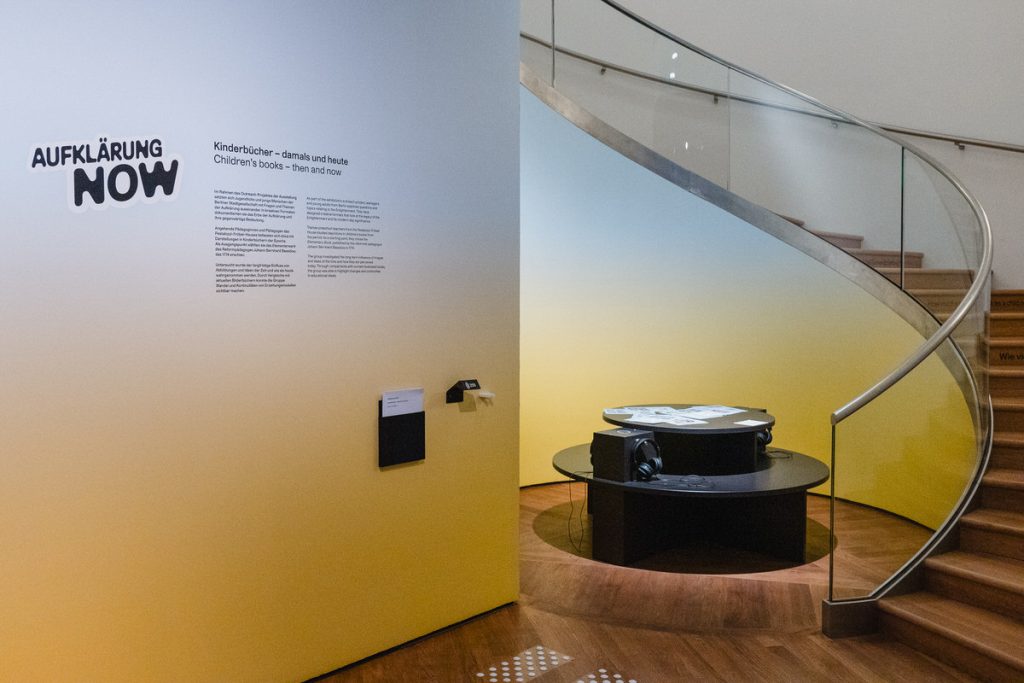
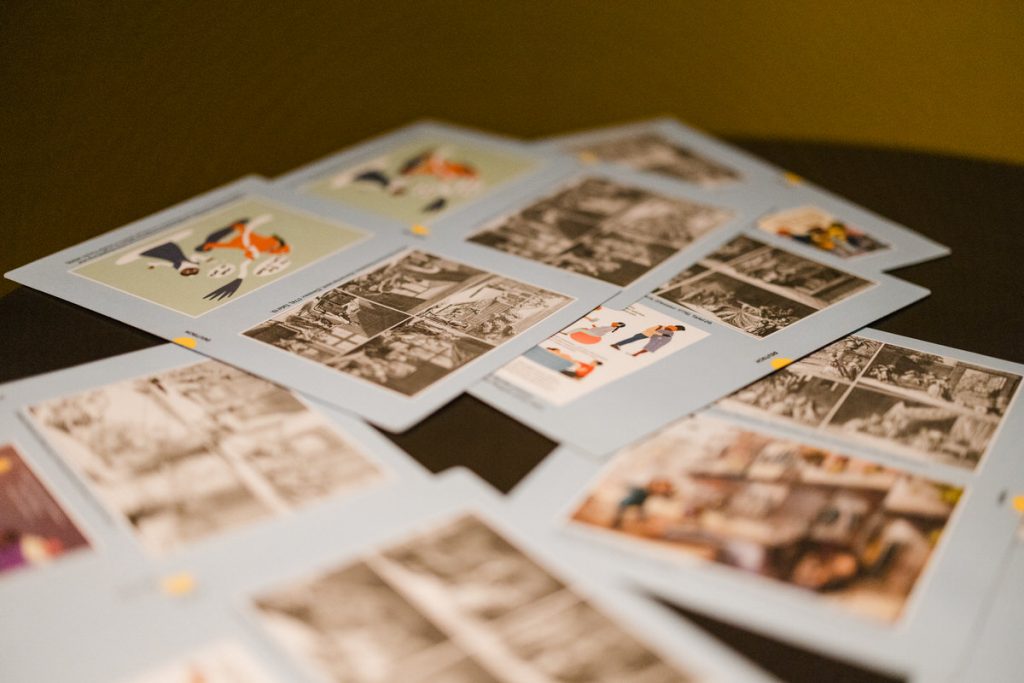
Photos: 1) Exhibition station “Children’s books then and now“ 2) The cards at the station compare illustrations from current children’s books with illustrations from Johann Bernhard Basedow’s “Elementarwerk“ from 1774.
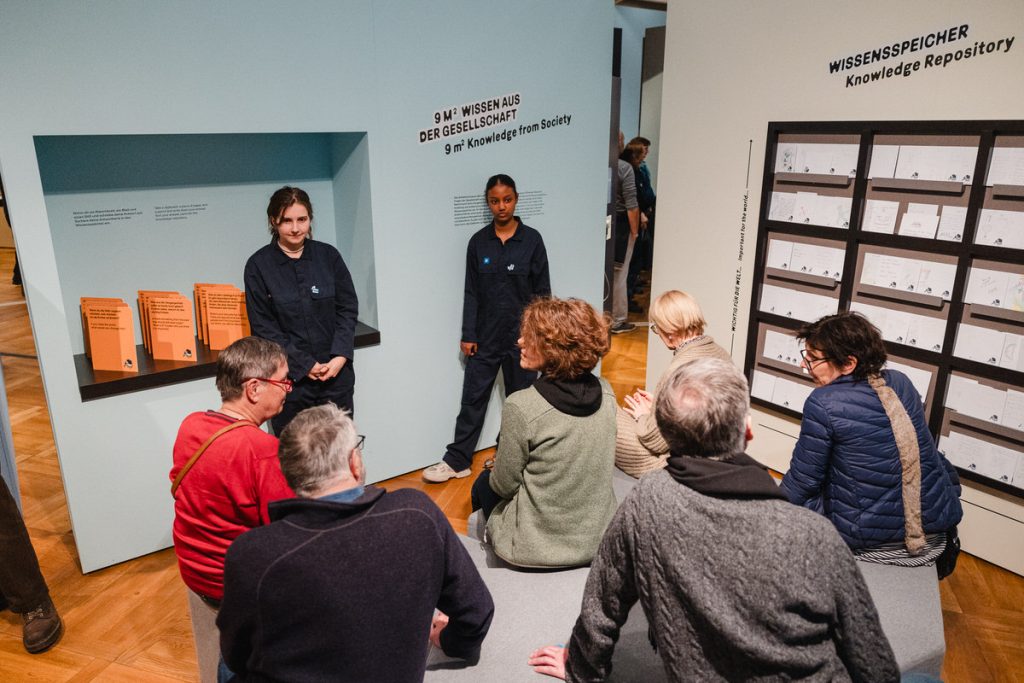
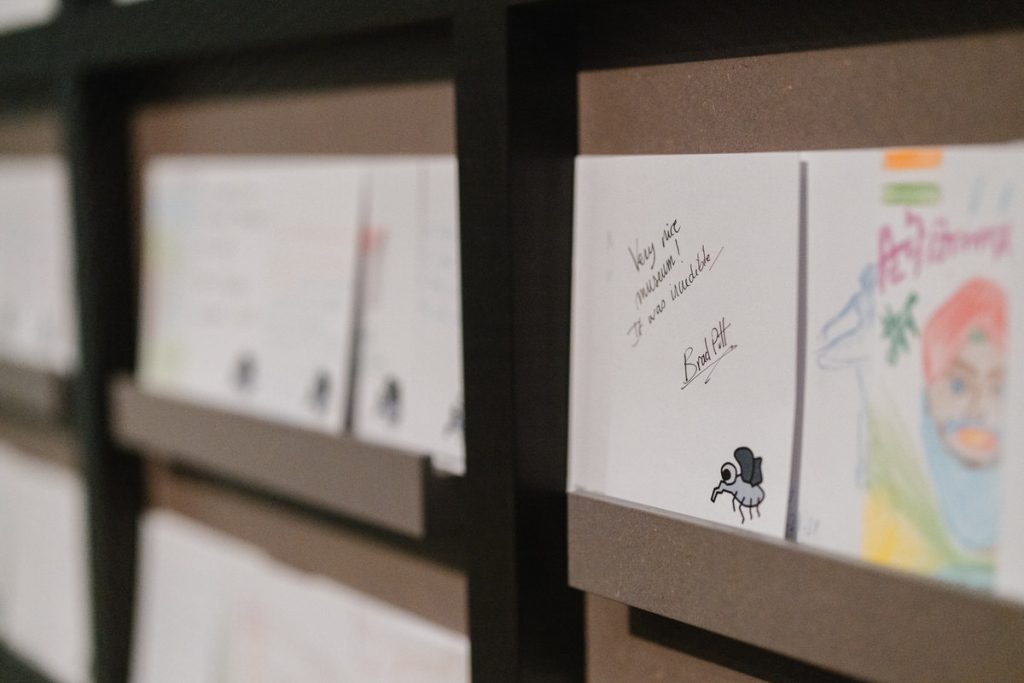
Photos: 1) Members of the Schattenmuseum youth committee present their exhibition area during an Enlightenment NOW festival 2) Works by visitors for the “knowledge repository”
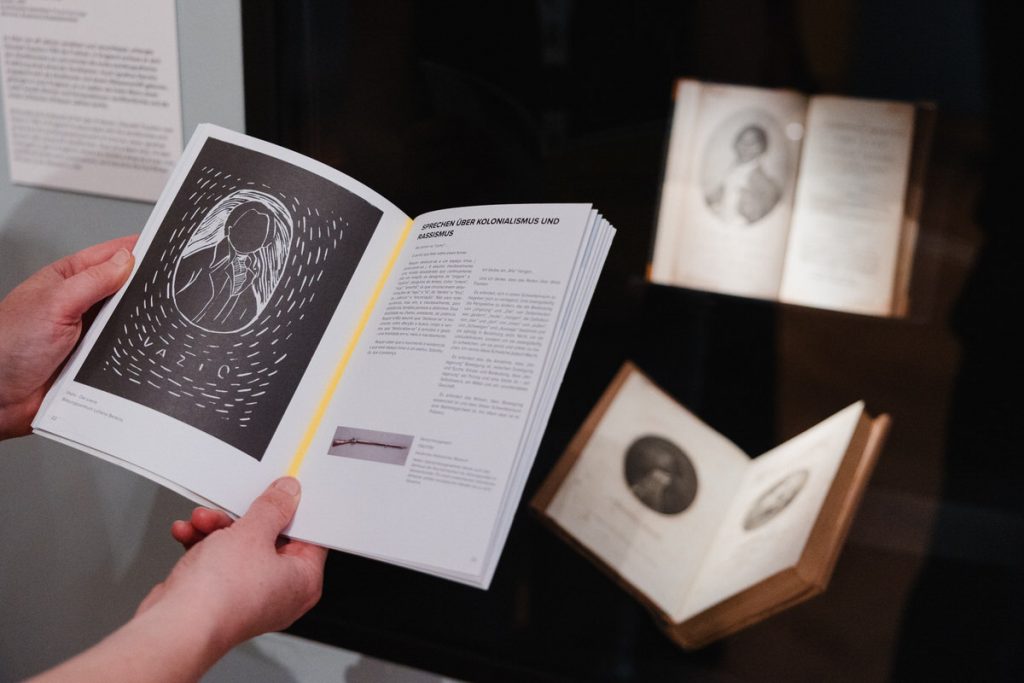
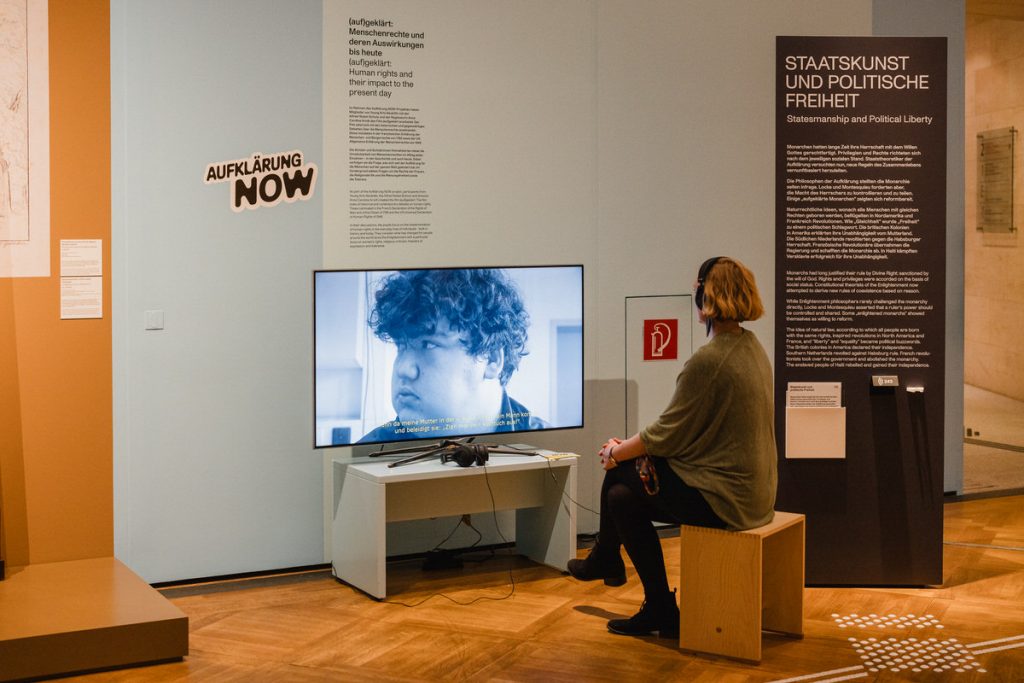
Photos: 1) Brochure “Thinking about the Enlightenment: Migrant Perspectives” 2) Film “(auf)geklärt”
Another highlight of the project consisted of the three Enlightenment NOW festivals. During the exhibition run, the festivals served as an open invitation to people who would not normally find the DHM’s offerings particularly relevant. On three evenings, the DHM was transformed into a place of entertainment and education for the young and young-at-heart by means of DJ music, rap and improvisational theatre performances, workshops, artistic interventions, mock debates, games, and more. Prominently featured were discussions about the topicality of the exhibition themes that had been addressed in the works of the project partners as well as by Deep Dives. The festivals showed that the DHM not only aims to appeal to new audiences but is also willing to provide a stage for their perspectives on historical and contemporary issues. Around 2,000 people took part in the festivals.
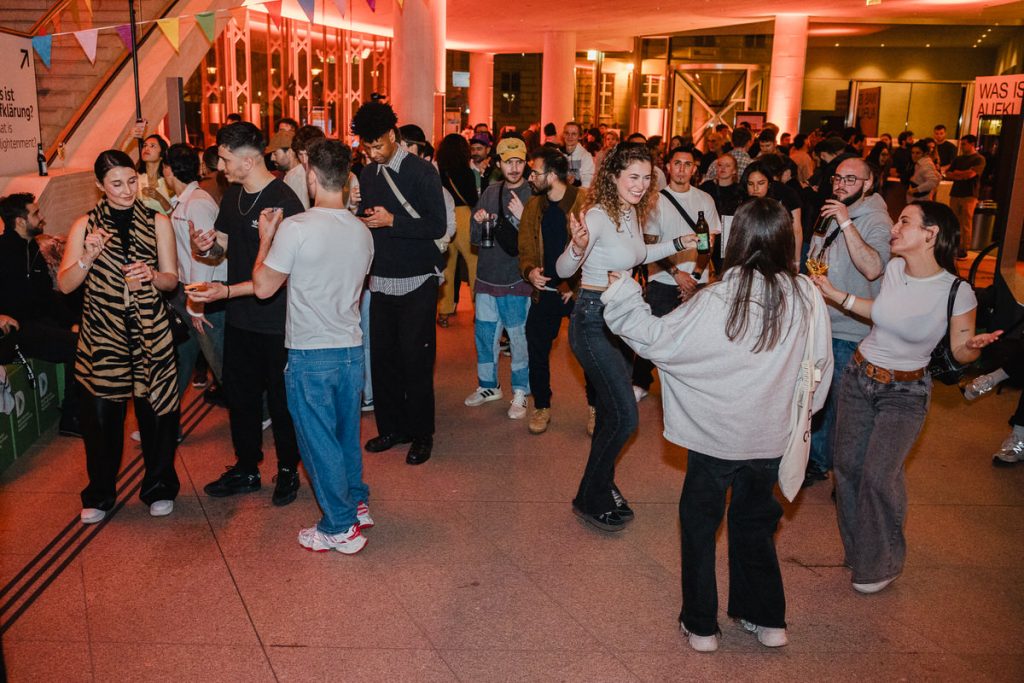
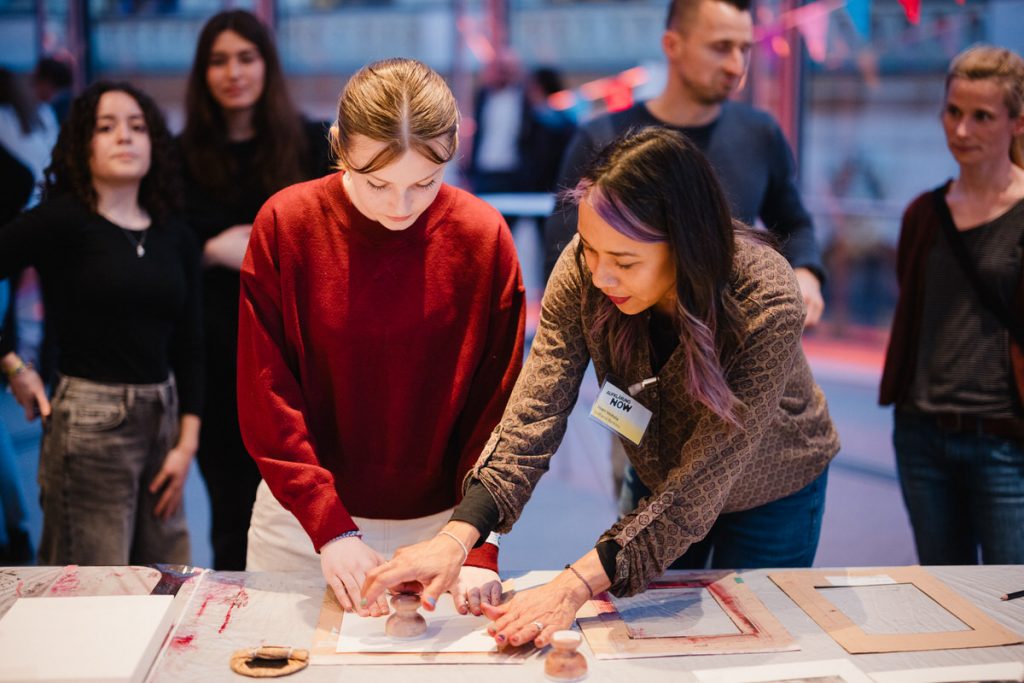
Photos: 1) Visitors dance at the Enlightenment NOW festival 2) Linoleum print workshop offered by the Lohana Berkins Education Centre
To ensure the long-term preservation of the works which the project partners had crafted with such passion, they are being made available online as part of the digital workshop materials. These materials enable groups to explore and participate in the themes of the Enlightenment NOW project independently and express their own points of view without having to visit the DHM. The experiences of the outreach project have shaped the development of these materials: they also focus on the overarching theme of human rights and deal with the history of women’s rights, children’s rights, and minority rights in general.
On 21 February 2025, the symposium “Courage to go public! Opportunities and challenges for museums” took place in the auditorium of the Pei Building with 78 participants. The focus was on exchanging ideas and discussing the advantages, but also the difficulties, of participatory outreach approaches for museums. The symposium focused on theoretical approaches. Ivana Scharf, for example, pointed out in her “10 golden rules for successful outreach” that outreach is not a “universal remedy” and should ideally be accepted as an institutional attitude. Anja Piontek presented different theoretical approaches to participation. It was important in the discussion to highlight the challenges on the one hand and the sustainability and future of the outreach projects on the other.
Overall, the Enlightenment NOW project represents a major learning process for the DHM and its staff. The desires and needs of groups that are not part of the DHM’s regular audience were identified. Participatory collaboration can motivate voluntary participation if the framework conditions are clear. By showcasing works developed co-creatively, the DHM was not only able to acknowledge the participation of the project partners, but also to communicate to others that the DHM values new perspectives on historical and contemporary issues from different parts of society and takes them seriously. These experiences can be used to develop future museum projects and thereby increase the museum’s social relevance.
[1] Scharf, Wunderlich, Heisig (eds.) Museen und Outreach (2018), p. 19.